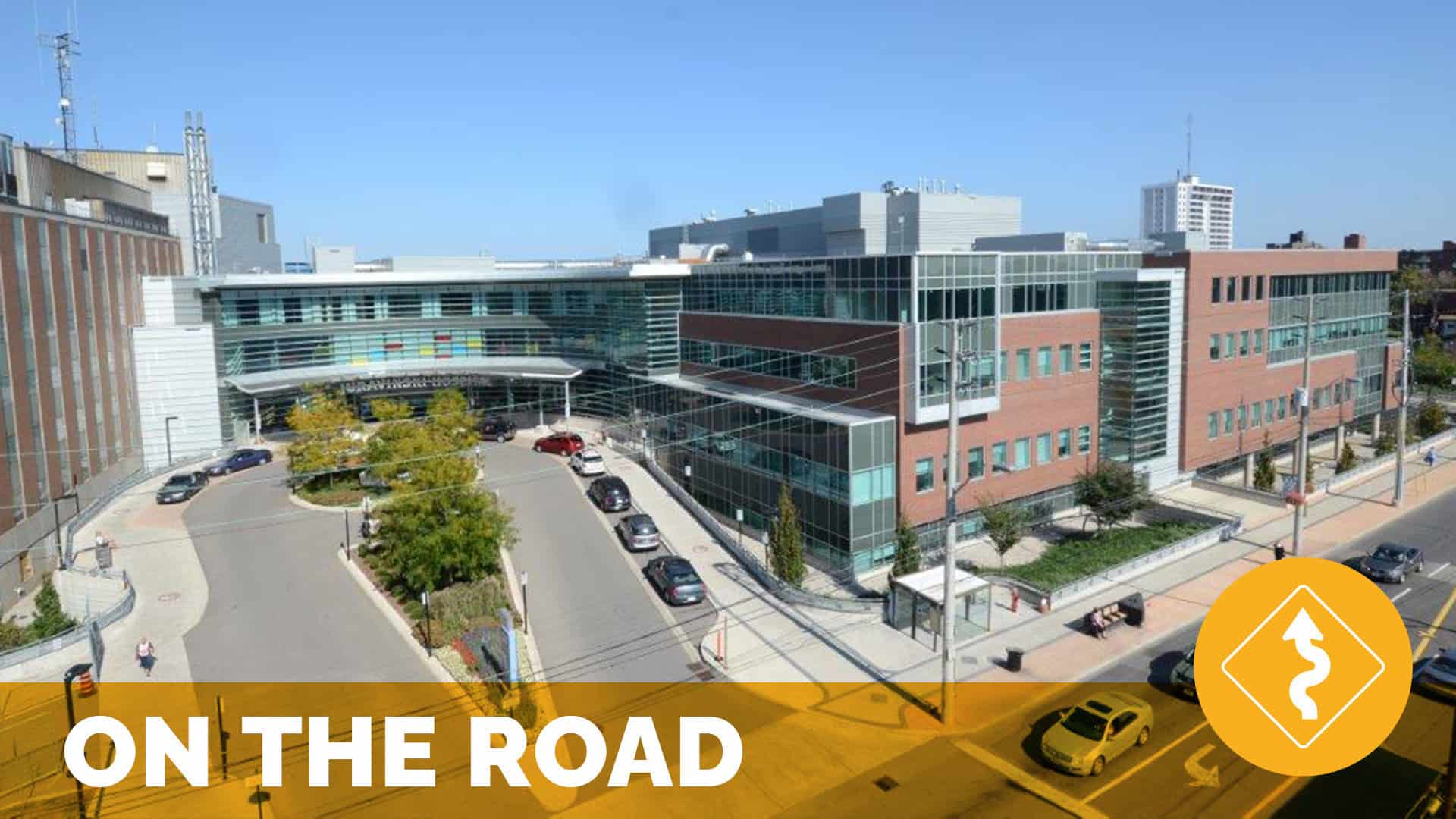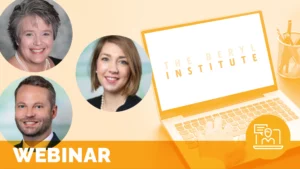A Relentless Pursuit of Patient Experience Excellence

On the Road with Hamilton Health Sciences – October 2017
by Jason A. Wolf, PhD, CPXP
My latest On the Road took me to Hamilton Health Sciences (HHS) in Hamilton, Ontario and a visit grounded in a rigorous and evidence-based approach to experience excellence. It is also the second month in a row that our travels reinforced the global nature of patient experience overall. While we recognize that there are systemic differences in healthcare among countries around the world, the common themes that are emerging in line with driving the best in experience, in a commitment to quality, safe and service driven healthcare, are clear and getting stronger every day.
My visit to HHS provided a thoughtful and insightful look into how an organization can and has strategically cast a wide net in bringing the vast elements and efforts of an organization together to drive experience outcomes. From core operating systems to the elements of staff development, research and community engagement, HHS has made a clear and unwavering commitment to bringing value to those it serves. In fact, as Kirsten Krull, VP Quality and Performance & Chief Nurse Executive, shared with me, “Ultimately, we are trying to create value for all in our system, patents and family members, our own people, and the communities we serve.”
A Strategic Patient Experience Effort
At Hamilton Health Sciences, the foundation of their effort is grounded on some core ideas and scientifically validated practices to drive to one end, that value is produced for those working in and ultimately those served by their system. This idea is framed by a relentless focus and commitment to the application of three models that triangulate an operating model on which HHS has built its effort.
The first, the Shingo Model, provides a system that helps an organization achieve operational excellence. The model is grounded on four tiers with the foundation focused on cultural enablers, followed by continuous improvement, enterprise alignment and results. The end result is creating value for the customer and doing so in a way you are in touch with, listening to and acting on the thoughts of those people who are doing the work. This model reinforces the central concept in the definition of patient experience itself, the culture of an organization matters and frames both the process by which and its ability to achieve the results to which it aspires.
The second framing idea is that of High Reliability Organizations and grounded in five specific concepts that help create a state of mindfulness, driving reliability and ultimately safety overall. These ideas, including a sensitivity to operations, preoccupation with failure, deference to expertise, resilience, and reluctance to simplify, are all power constructs in their own right. But as they become integrated into a greater organizational awareness, linked to the clear purpose HHS has framed, these considerations all enable a clear pursuit of not just consistent quality care, but an impact on value overall. In particular, Kirsten Krull added this commitment helps address a mismatch often seen where while healthcare organizations have an aspiration of quality, safe care, those we serve see that as the expectation and baseline. HHS clearly has developed a system to move beyond aspiration and commit to exceeding expectations with their focus.
The last component of this model is commitment to the implementation of a management system ( HHS has branded this as Continuous Quality Improvement or CQI). The system is being implemented across the system to be focused on daily improvement efforts at the front- line to address opportunities in the organization aimed at improving the care and experience of patients and those who provide the care. grounded improvement efforts to address opportunities in the organization. The HHS CQI system hardwires the behaviours aligned to the key principles of the Shingo Model described above. First and foremost is respect for all individuals and leading with humility which requires leaders to go to where the work is done and ask questions to understand the key issues facing the front-line and patients and families. Aligning the daily continuous improvement of the 13, 000 problem solvers in the organization to the strategic goals will deliver the results the patients and families deserve.
What is significant here in the efforts at HHS is that often a management system or model is applied with broad reach, but less tangible application. What was evident and what I experienced in my conversations with leaders from across HHS was that the model stayed true to its commitment of value and when taken at its true intent, this value rests squarely at the center of the provision of experience excellence itself. The lesson reinforced for me was that while management models can be put into play for many reasons, when there is clear intention and purpose they can truly be practical and useful means by which to ensure positive experience performance overall.
Strategy to Action in Driving a Positive Patient Experience
As HHS developed their patient experience efforts, two specific actions stood out to me. The first was an expanded commitment to patient and family-centered care (PFCC). The second a commitment to measuring the voice of the patient overall. These efforts were driven around an overall experience landscape shared by Rosanne Zimmerman, Director of Patient Experience and Safety. The capacity for excellence in patient experience is supported by the ability to understand, change and improve and in doing so the experience effort at HHS followed three specific streams – a focus on leadership, engaging hearts and minds, and ensuring partnership and hearing patient voice.
In linking these ideas, the PFCC model of communicate, collaborate and respond with compassion was expanded by engaging over 100 patients and to explore what PFCC “looks like” and what matters most to them. In the end, thirteen specific behaviours emerged that supported the concepts of – communicate, collaborate and respond. Each of these concepts include 4 or 5 key statements from the patient perspective in response to the statement, “As a patient, I ask that you always…”. This commitment to not only listening, but creating a framework for action was a thoughtful and focused effort to link the voices of those served to the efforts of all at HHS. This powerful linkage has provided a clear and actionable means by which to positively impact experience.
In expanding this work, the team at HHS also took a deep dive into creating a survey resource for understanding patient perspective grounded on the same ideas developed in the PFCC model. Using those identified themes as a framework the team drafted, tested and analyzed a full survey process to measure performance to those items.
The survey process was designed to be easy to access – it is conducted by the volunteer team primarily at the end of people’s stay either via iPad or paper and completed relatively quickly, covering just 20 key questions.
The survey process has allowed HHS to not only gauge the perspective of those it serves, but also to measure progress to the items it deemed matters most to patients and families. Having been in place since 2014, emerging data trends allow for the identification of opportunities for action and improvement. In addition, the process provides access to real-time data, with results available to the front lines often within 24 hours. This ensures proximity of information to drive more rapid improvement. With an 86% completion rate of those patients approached to survey, the data has become a core indicator of progress while ensuring the voices of those served is honored, included and valued as a resource for positively impacting experience.
While I will briefly share the integrated nature of how HHS has woven in many of its efforts to support experience, and expand patient and family, community and employee engagement, it is this model of listening, structured action, and improvement that is a clear and powerful example of how experience and a commitment to excellence in experience isn’t a tangential idea, but can and I would suggest should be a central focus of how a healthcare organization operates. If we return to experience from the perspective of patients and families with expectations of and no distinction between quality, safety and service as they are all part of one experience, a structured approach of listening, improvement, commitment to culture and value may be one of the most effective means to reinforce the position of the patient and ultimately the human experience at the heart of healthcare.
Ensuring an Integrated Approach to Experience
The remainder of my time at HHS was spend learning about how many of the functions and strategic considerations of the organization have an experience lens. Much of this all aligns back to the commitment of value to those served. A great deal of this work was linked to the broader strategic line of sight for HHS in planning for Our Healthy Future. This is a long range planning exercise which includes a new clinical vision and redeveloped facilities.
As part of the Our Healthy Future work, there was an effort for broad community engagement to identify how HHS as a system would need to grow and change to meet the needs of those it serves. The outcomes of this effort, which was grounded in an extensive effort to listen to community members and engaging over 400 people in the initial process, and almost 300 others since to identify some key focal points for the organization. What people identified in what they wanted from the organization was:
- A quality experience
- Involve my family and caregivers
- Everyone needs an advocate
- Assistance in navigating the system
- Feeling respected
I highlight these findings for what they represent. In looking at all HHS has done and the efforts many members of The Beryl Institute community have shared, these very needs identified by the community reinforce what is most important to them overall – the experience they are provided. This is not just represented in the first point, but in understanding family and caregiver involvement, having an advocate and a means to navigate and feeling as if I am being treated like a human being. What Our Healthy Future reinforced was that experience at it broadest framing is at the heart of what people want from healthcare overall. It was evident to me that HHS was wired as an organization to drive this focus.
During my visit, I was provided insights into some of the various aspects of HHS efforts. This included efforts such as linking ambulatory care focus to the commitment of Our Healthy Future and the involvement of voices they ensured to create a greater connection between the needs of those served and the outcomes achieved. It was apparent in a broader commitment to mindfulness in ensuring the organization was not just operating with a process mindset, but was cognizant of how humans ultimately react in the healthcare environment, the emotion and stress it reveals and the need to address all aspects that impact people on both sides of the healthcare equation. This includes what moves them to end of life issues and the power and influence these ideas have on our healthcare organizations. This level of awareness, engagement and caring was evident in a number of other programs shared from creating powerful models for understanding needs and engaging in emotional support in cancer care to creating a connection to care that eased the stresses of the care system via a program such as HealthLinks, designed to bring care closer to where needs were, making care more accessible, more coordinated and committed to overall health at the right place at the right time.
This focus on those served was paralleled by a commitment to those providing care. As noted earlier, caring for the people and fostering the culture of HHS was a central commitment and engaging people and developing them at all levels of the organization was critical. From creating a powerful redesigned learning model grounded on teams, innovation and a clear return on investment, to an employee engagement process that acknowledges the people of HHS across care settings are the primary resource in providing experience and the best in outcomes overall.
This weaving together of all efforts in the interest of experience excellence was evident, and while I recognize that every individual I met knew I was there to explore the experience efforts at HHS, what was clear to me was that they were not just highlighting their work that focused on experience. Rather in sharing all the strategic and thoughtful work taking place at HHS, an experience theme was hard to miss. This comes back to my initial introduction of a relentless and unwavering commitment to value. That value has to focus on all engaged in healthcare AND be driven by all engaged as well. This was exemplified in all I saw at HHS.
Conclusion
While a one day visit and couple thousand words can never provide the true depth of an effort in any healthcare organization, it was the consistency in themes and shared and implicit understanding of the value of experience that truly emerged in my observations and opportunity to learn from the team at HHS. With a clear focus, and an operating model to drive connection, learning and improvement I feel for all that HHS has accomplished they will see much greater returns as they move forward.
In committing to listening to those they serve and caring for one another, HHS has taken a highly respected institution of healing and research and added an unmissable layer of humanity to its efforts. This was evident in the passion with which each leader expressed a commitment to their specific work, but realized linkages to the greater objectives and opportunities ahead.
As healthcare organizations globally struggle with similar issues of people, resources, space, volume, policy pushes, and increased consumer awareness and demands, it will take the kind of structured effort wedding to human focus that HHS has built to drive greater success. It was an honor to learn from and be inspired by the efforts at HHS, their relentless pursuit of value should be a rallying cry for us all.
Related content
-
 Infrastructure & Governance
Infrastructure & GovernanceConnection Call: Aligning Volunteer Services and Patient Experience for Maximum Impact
12pm ET / 11am CT / 10am MT / 9am PT – We all know that the work that volunteers do in our organizations directly impacts patient experience, but that connection isn’t always clear to your patient experience department. So how do you create and amplify that partnership? Join us as we learn from our
Learn more -
 Policy & Measurement
Policy & MeasurementUnderstanding the care experiences and support needs of UK adults treated in hospital for meningitis
Background: Meningitis often results in ongoing and multifaceted after-effects, which can impact many aspects of people’s lives, yet relatively little support and follow-up is offered. This study explored post-treatment meningitis care experiences of UK adults aged 16 and over following a recent stay in hospital for meningitis. Methods: A survey was designed to ask about hospital
Learn more -
 Culture & Leadership | Infrastructure & Governance | Staff & Provider Engagement
Culture & Leadership | Infrastructure & Governance | Staff & Provider EngagementHow Daily Huddles Launch Conversation to Drive Metric Improvement
Since 2015 Cone Health Medical Group has been intentional about creating a culture of service excellence. Watch this webinar to discover how we partnered with Ritz Carlton Leadership Center to implement some of their key components ensure we have communication traveling from our sites up to our leaders and from our leaders down to our
Learn more
